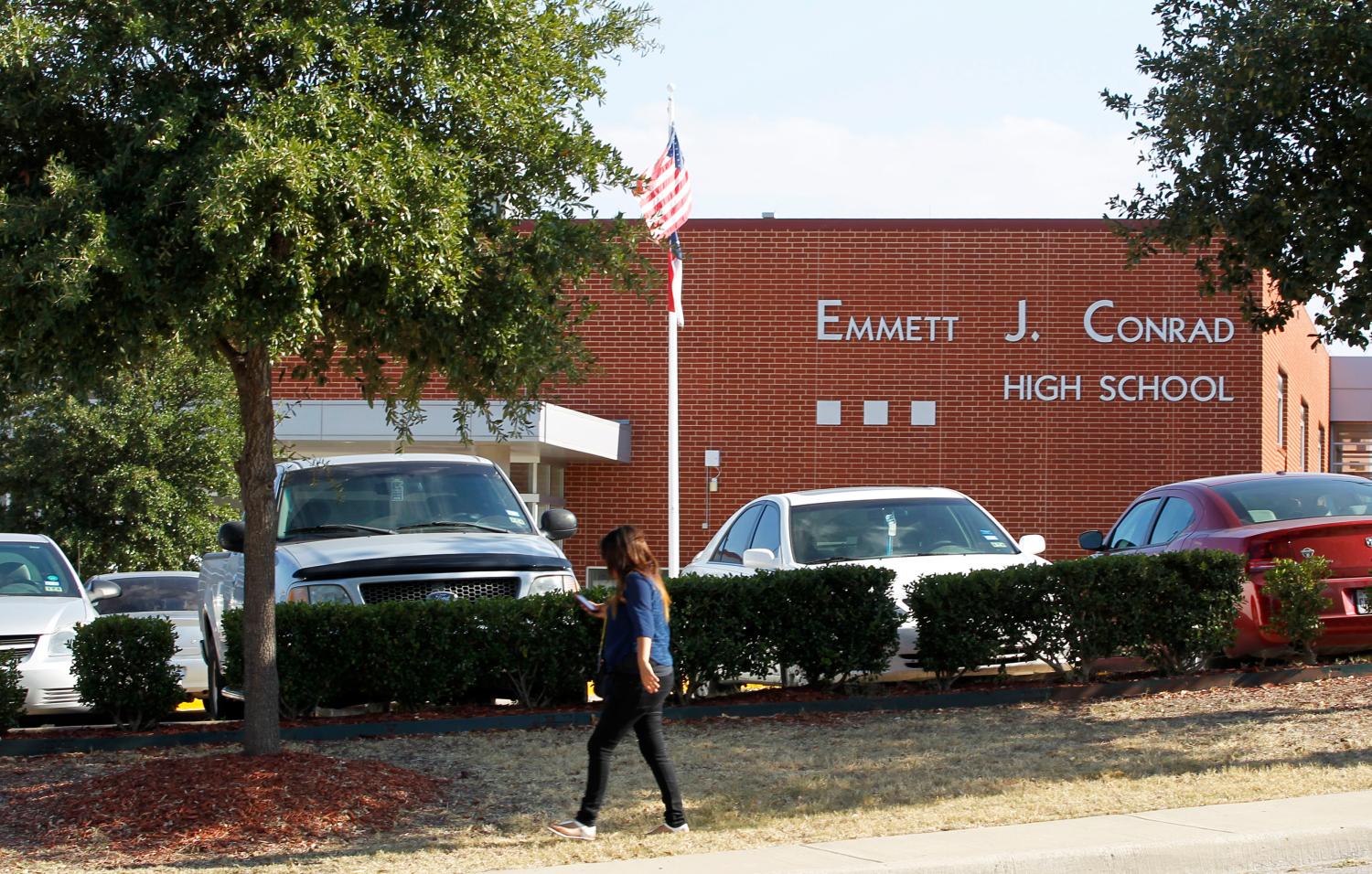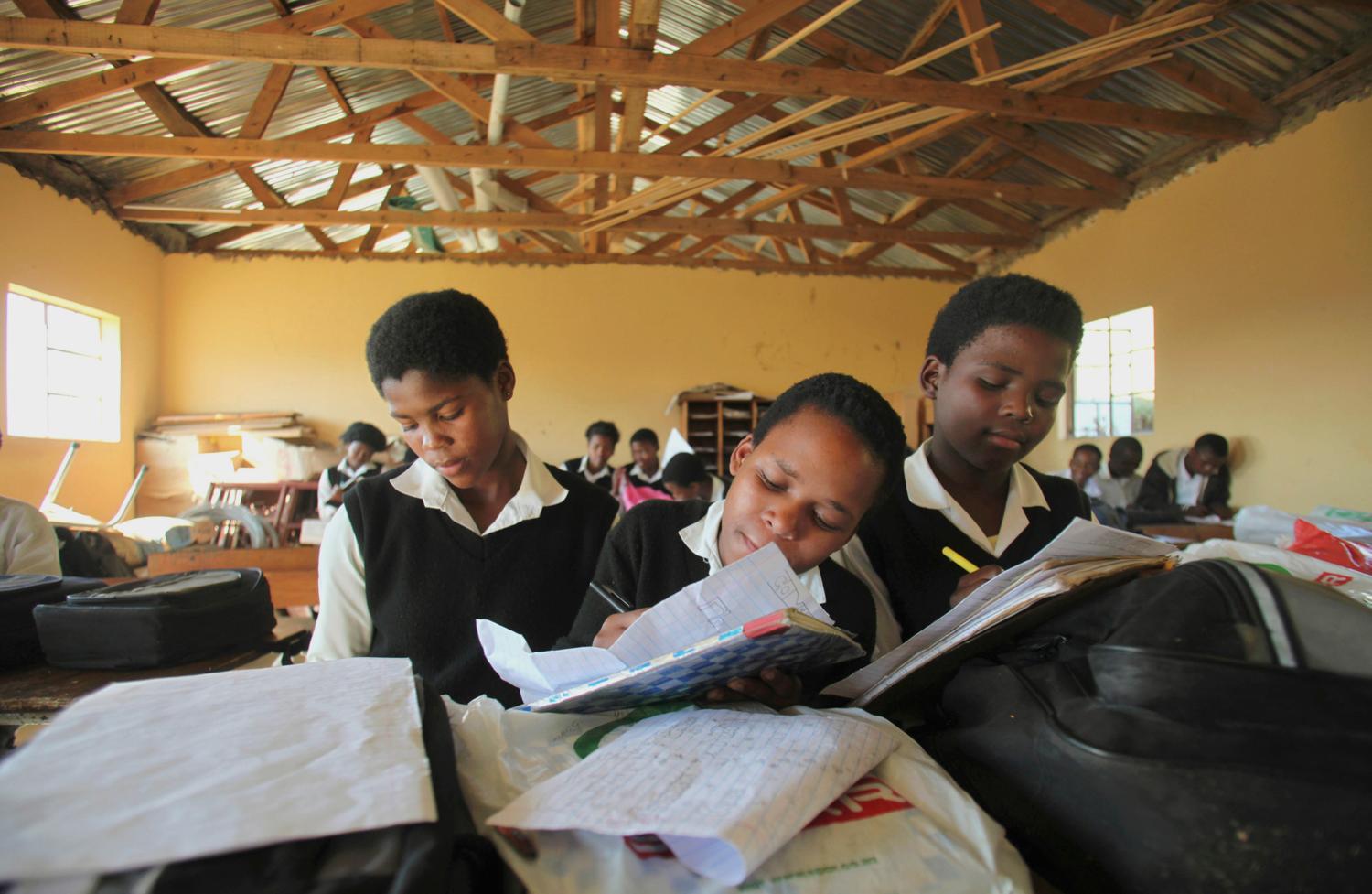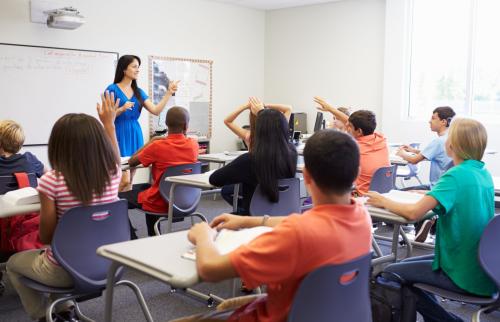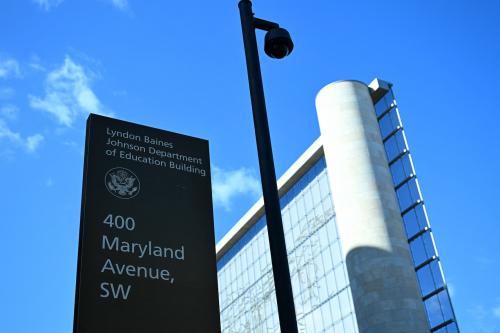Efforts are moving ahead to reauthorize the Elementary and Secondary Education Act (ESEA) and its broad parameters are becoming clearer. The bill is likely to keep an annual testing requirement, but change accountability structures created under No Child Left Behind (NCLB), allowing states to create their own. But, like NCLB, the new bill will shortchange older students and those at risk of dropping out of school. The Alliance for Excellent Education has called this phenomenon the “missing middle.” Federal education spending is U-shaped, with large amounts spent on programs for young students and large amounts spent on college students in the form of student financial aid. The middle is missing, especially for students in secondary schools.
Recently, the press has heralded increases in the rate of high school students graduating on time; it’s now above 80 percent. The on-time graduation rate going up is welcome news, and perhaps NCLB played a role. But 20 percent of students still do not graduate on time. Imagine if one in five new cell phones didn’t work. Policymakers would be deluged by complaints and critics would be decrying the cavalier way the industry treats its customers.
Some students who do not graduate on time may ultimately graduate, or receive a General Education Development certificate. But many never graduate. The National Center for Education Statistics reports that there were about 14.5 million high school students in 2012, and that four percent of them stopped attending high school that year. Four percent seems small but the base is large, and together they imply about 580,000 students stopped attending school. They dropped out. To put this number in perspective, there were 584,000 deaths from cancer last year in the U.S.
Dropping out is a stubborn problem. Even as the number of teen mothers has declined sharply, and juvenile arrests likewise have declined, the dropout rate—the percent of students who stop attending school in a year—has only fallen gradually from six percent to four percent in the last forty years. And the dropout rate is not equal for all students. In 2009, it was two percent for white students, five percent for black students, and six percent for Hispanic students. It was 1.4 percent for students from high-income households and 7.4 percent—five times larger—for students from low-income households.
The American economy over the past three decades has moved toward high-skill jobs. There is no sign that this trend is abating. Yet more than half a million young people will stop attending high school this year without a diploma. They are not ready for college or a career and face a rough road ahead for jobs and earnings. Based on research by Cecilia Rouse, the National Center for Education Statistics estimated that dropouts will earn $630,000 less than graduates in their working lives. So, every year, the economy loses more than $300 hundred billion in foregone earnings. Even in a big country, this is a big number.
And dropouts are more likely to receive public assistance from the alphabet soup of programs: TANF, SNAP, WIC, CHIP, and so on. They also are more likely to end up in jail or prison, which is hugely expensive. Texas alone spent more than $3 billion on prisons in 2010.
The one-two combination of lower earnings and more public assistance means it is very much in the public interest to reduce dropping out. The federal government began actively studying programs to lower the dropout rate starting with the Hawkins-Stafford bill in 1988. Those research efforts wrapped up in 1998 with the release of two reports prepared by Mathematica Policy Research for the U.S. Department of Education (here and here). The reports summarized findings from rigorous studies in 21 school districts (I was the principal investigator for these studies). Not many programs improved outcomes. It was a starting point and clearly there was more to learn.
The federal government followed that research with, well, almost nothing. The What Works Clearinghouse did release a practice guide about dropout prevention in 2008. Most of the research that the guide reviewed was from the nineties. And the WWC has reviewed research for 30 dropout-prevention programs. Many had been studied as part of the same federal evaluation and other reviews found that there is not enough research meeting standards to know whether programs were effective.
More recently, the National Center for Education Statistics surveyed school districts about their dropout prevention programs. It was the first survey NCES had conducted of dropout prevention programs. (The Government Accountability Office surveyed programs in 1987.) A lot was learned from the NCES survey, including that nearly every school district was providing services and programs for its students at risk of dropping out. For example, 99 percent of large districts (ones that enroll more than 10,000 students), offered alternative high school programs.
Though not reported in the NCES survey, it’s evident that districts are funding dropout prevention services with their own resources or state resources. Not much ESEA Title I money reaches secondary schools—only 32 percent of secondary schools get any Title I funds, and they get about $500 per low-income student. Direct federal spending on dropout prevention is only about $5 million a year. That’s less than ten dollars per dropout.
“Early intervention” is the idea that preventing problems can be more effective than treating them. Following that logic might suggest focusing on pre-K and elementary schools so that fewer students struggle in middle and high schools, which can lead to dropping out. But early intervention spends money on students who may not develop problems. Waiting until issues develop can be cost-effective because which students to help becomes evident. Not many first graders are experimenting with drugs or being arrested for delinquency, but when it happens with an eighth grader, the problem is clear.
Spending more money on pre-K or elementary schools may be desirable for other reasons, but if reducing the dropout rate is the focus, middle schools are the key. Students who enter high school poorly prepared and with bad habits—missing a lot of school, acting out, failing subjects—are known to have a high likelihood of dropping out. The Bush Institute currently is spearheading an initiative to promote middle school reform with the University of Texas. The Johns Hopkins University continues to refine its ‘Talent Development’ model for middle schools, but, overall, there are not many efforts related to improving middle schools in order to reduce dropping out. The National Dropout Prevention Network at Clemson University has accumulated other resources and links on what states and districts are doing to reduce the dropout rate.
The lack of federal attention to dropping out is highlighted by the “here today, gone tomorrow” nature of early warning systems. Early warning systems are databases that flag students showing signs of difficulty in school. Using early warning systems allows resources to be targeted to students who need help. In 2008, drafts of a reauthorized ESEA included support for districts to develop early-warning systems. Recent drafts of ESEA do not mention them at all. Where did they go? The federal government already has granted more than $600 million to states to support their efforts to develop student databases. It would be straightforward for it to provide additional impetus to refine those systems so that they provide early warning capabilities.
Graduating from high school is a win-win opportunity to improve earnings and reduce public assistance. There are ample reasons for the federal government to play a role and not leave it up to states and localities to help students graduate or to study ways to promote graduation. With $300 billion a year on the table, even small reductions in the dropout rate are likely to pay handsome returns.
Of course, there are priorities in policymaking, but reducing dropping out should be one of them. Senator Warren introduced an amendment to ESEA that would direct additional resources to high schools with very high dropout rates. Focusing on middle schools will be a better use of funds.
The Brookings Institution is committed to quality, independence, and impact.
We are supported by a diverse array of funders. In line with our values and policies, each Brookings publication represents the sole views of its author(s).





